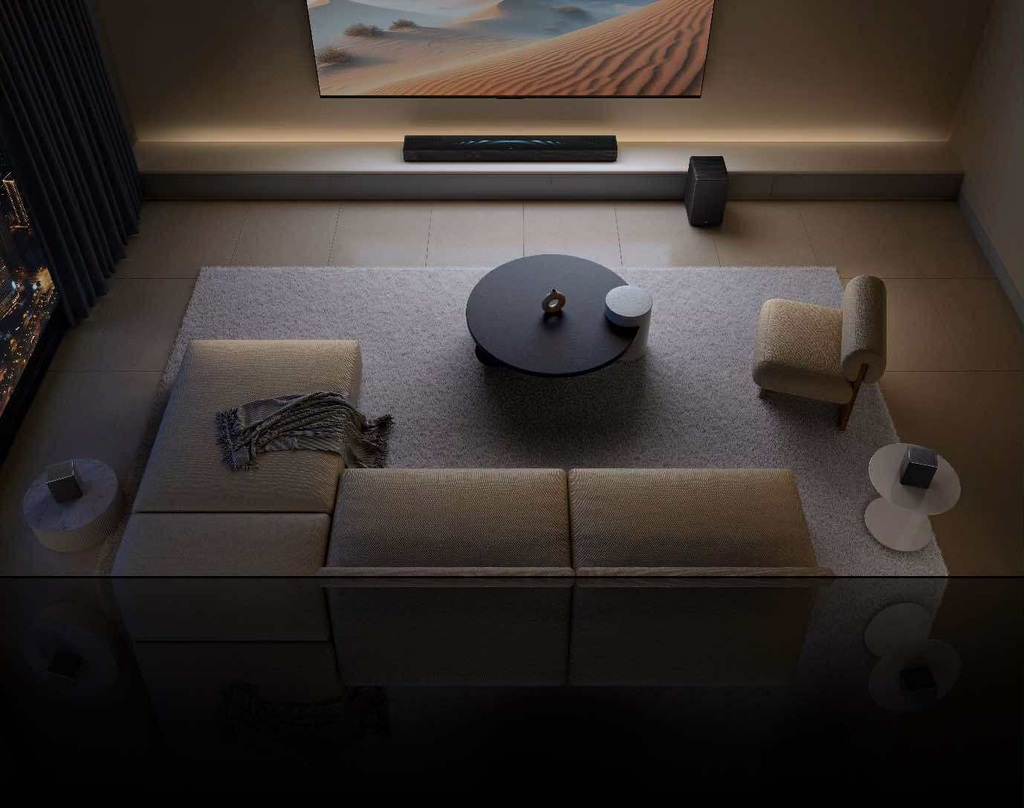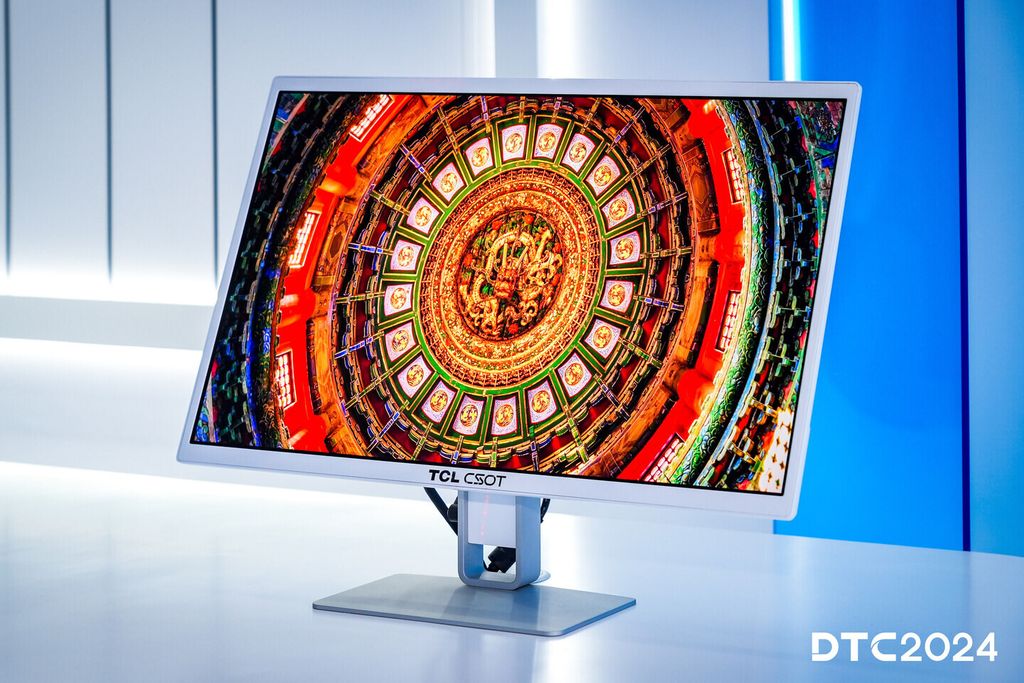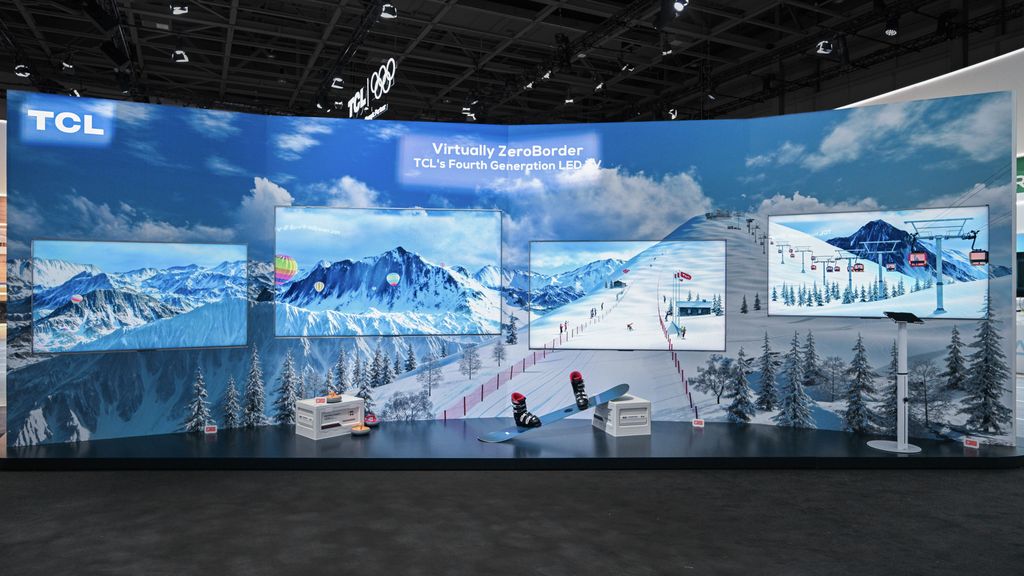- Matching (Score)
- Our verdict
- Competing TVs
- TV appearance
- Where to buy
- Contrast and black detail
- HDR effect quality
- Factory color reproduction
- Color reproduction after calibration
- Smoothness of tonal transitions
- Image scaling and smoothness of tonal transitions
- Blur and motion smoothness
- Console compatibility and gaming features
- Input lag
- Compatibility with PC
- Viewing angles
- Daytime performance
- TV features
- Apps
- Playing files from USB
- Sound
- Panel details
TCL C6KS / C69KS / Q6CS Review
C6KS / C69KS / Q6CS
Available screen sizes:

Complete the survey to find out the result
Panel type: LCD VA Refresh rate: 60Hz Brand: TCL Resolution: 3840x2160 System: Google TV Model year: 2025
Who, if not TCL, is the absolute master of mixing up the naming of its televisions, and the model C6KS being tested today is perfect evidence of this. You can also find it in stores as C69KS or Q6CS, which only adds to the confusion. But let’s set aside the symbols. How does this television differ from its "full-blooded" and slightly more expensive brother C6K? The biggest difference lies in the refresh rate: instead of the gaming 144 Hz, we have a 60 Hz panel here. However, on paper, it's still powerful equipment, as we are dealing with Mini-LED technology with local dimming. And this raises the most important question of this test: Is the cheaper C6KS "almost the same" in terms of picture quality, or is the difference significant enough that it's worth paying a little more?

TCL C6KS - Our verdict
6.4
Overall rating
TCL C6KS (also known as C69KS and Q6CS) is a television that on paper promised to be a hit in the "value for money" category. Indeed, in many respects, it is a successful piece of equipment: thanks to Mini-LED backlighting, we get good blacks and brightness that competes with more expensive models. In fact, it is identical to the slightly pricier C6K model that we have already tested for you. Additionally, it features the same excellent Google TV system and surprisingly rich gaming features that make it enjoyable to play even with a 60 Hz panel. Unfortunately, the overall impression is tarnished by the performance of the panel used. The television struggles with noticeable motion blur, and aggressive dithering (digital grain) causes the image to often appear unnatural and artificial – as if it were being overly sharpened. Ultimately, the biggest problem with the C6KS is not its flaws, but its sibling, the C6K. At its current price, this model finds itself in a strange "middle ground." It costs almost the same (or slightly less) as the fully-fledged TCL C6K, which offers a significantly better 120 Hz panel and is simply a complete construction without those annoying errors. The C6KS is a compromise model that will only become attractive under one condition – if its price drops drastically. For the moment, a significantly safer and better option remains paying a (often nominal) premium for the C6K model. One could cynically state that the letter "S" in the name indeed stands for "Slim." Only it does not refer to an exceptionally slim chassis, but to how much this model has been "trimmed" in terms of features compared to the full-fledged C6K.
Advantages
Very good contrast and black levels: VA panel and MINI-LED backlighting
Fairly high (around 600 nits)
Many features for gamers: VRR, ALLM, HGiG
Additional gaming modes: 120Hz and 144Hz
Google TV system with a wide selection of apps
Supports multiple HDR formats including Dolby Vision
Support for Dolby Atmos and DTS
Quite pleasant sound from the built-in speakers
Disadvantages
The matrix has significant smearing
Strongly visible dithering (looks like artificial 4K)
Very poor compatibility with PC
Minor bugs in the system
Great chaos in naming (many derivative models that differ in no way)
Movies and series in UHD quality
5.9
Classic TV, YouTube
6.1
Sports broadcasts (TV and apps)
5.3
Gaming on console
7.7
TV as a computer monitor
1.7
Watching in bright light
6.6
Utility functions
7.0
Apps
9.6
Sound quality
6.5
Complete the survey to find out what fits your preferences
TCL C6KS - Competing TVs in this price range
TCL C6KS - TV appearance
HDMI inputs: 3 x HDMI 2.0, 0 x HDMI 2.1 Outputs: Toslink (Optical audio), eARC (HDMI), ARC (HDMI) Network Interfaces: Wi-Fi 2.4GHz, Wi-Fi 5GHz, Ethernet (LAN) 100Mbps
Build quality: Good
Stand type: Legs
Bezel color: Graphite
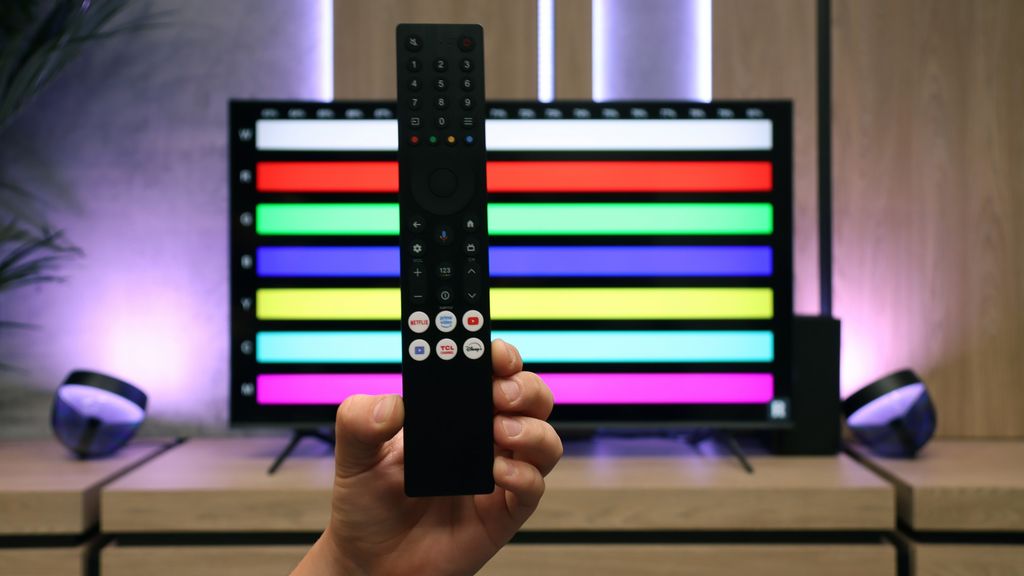
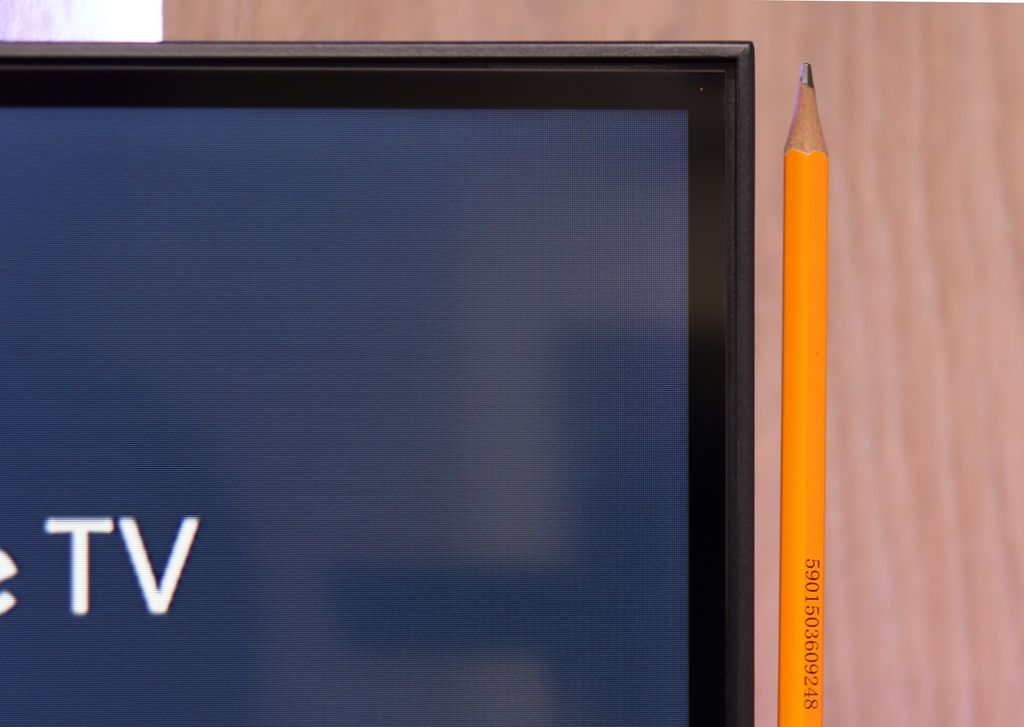

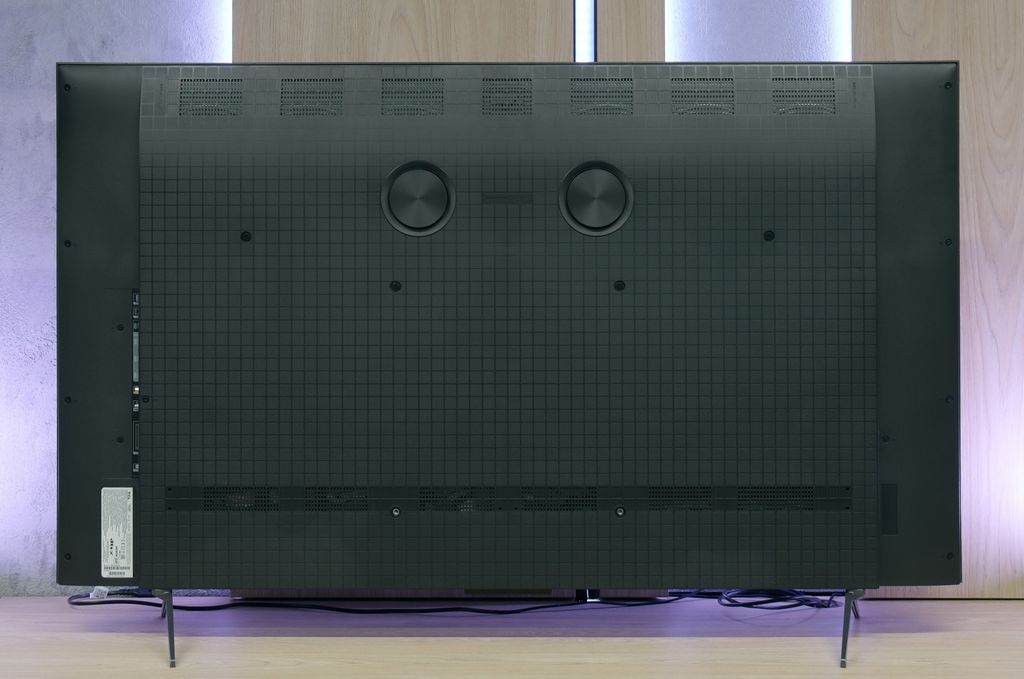
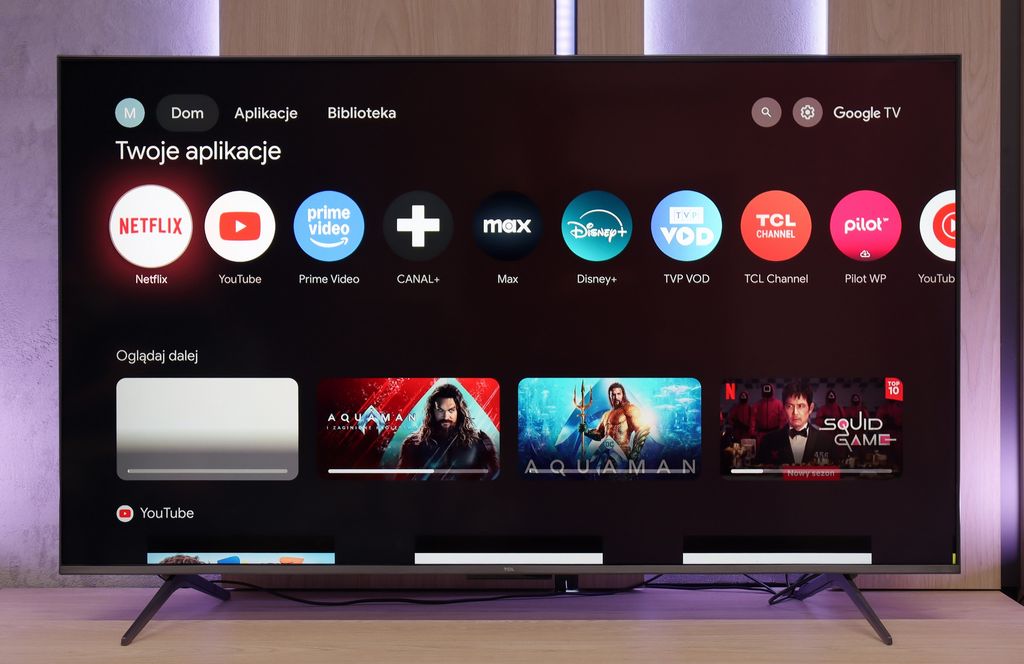
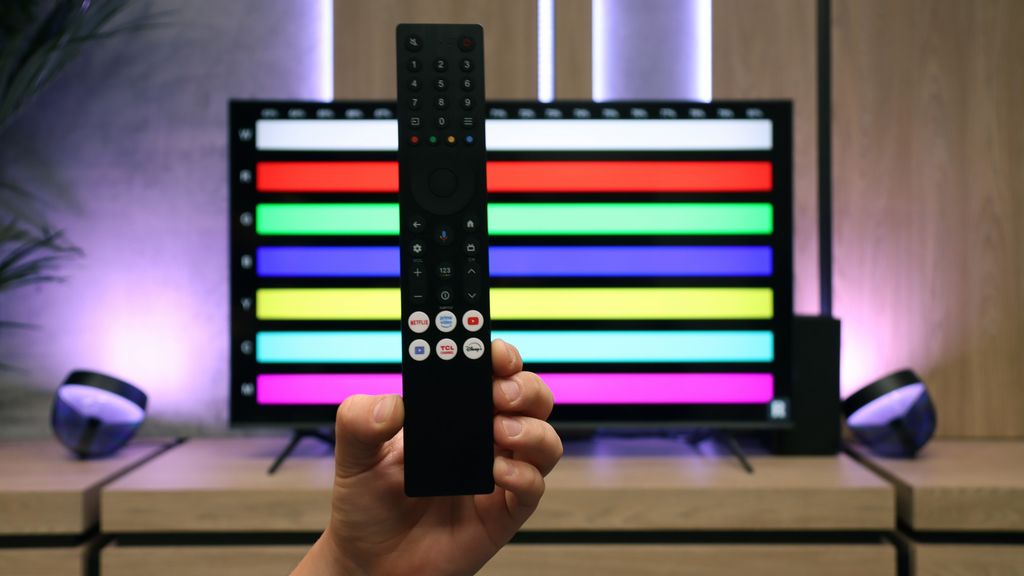

Stand: Fixed
Flat design: Yes
Accessories: Stand
In terms of appearance, the TCL C6KS looks almost like the twin brother of the more expensive C6K model. The manufacturer has not cut corners here and has used the exact same chassis along with the identical leg configuration. If you were to place these two televisions next to each other, you truly would not be able to point out the difference. The only way to be sure which model you are dealing with? You need to take a look at the back of the casing and read the label with the product code.
The design itself, for such a relatively cheap television, is generally very elegant. The bezels are narrow, and the overall look is modern. You will even find visual "treats" associated with premium class, such as a tasteful brand emblem placed in the upper right corner of the screen. In short: this is a really well-crafted device that looks more expensive in the living room than it actually is.
Buy at the best price
Select size:
TCL C6KS - Contrast and black detail
7.5/10
Local dimming function: Yes, number of zones: 180 (10 x 18)

Result
129,650:1

Result
26,650:1

Result
12,900:1

Result
12,600:1

Result
6,250:1
Visibility of details in the lights:
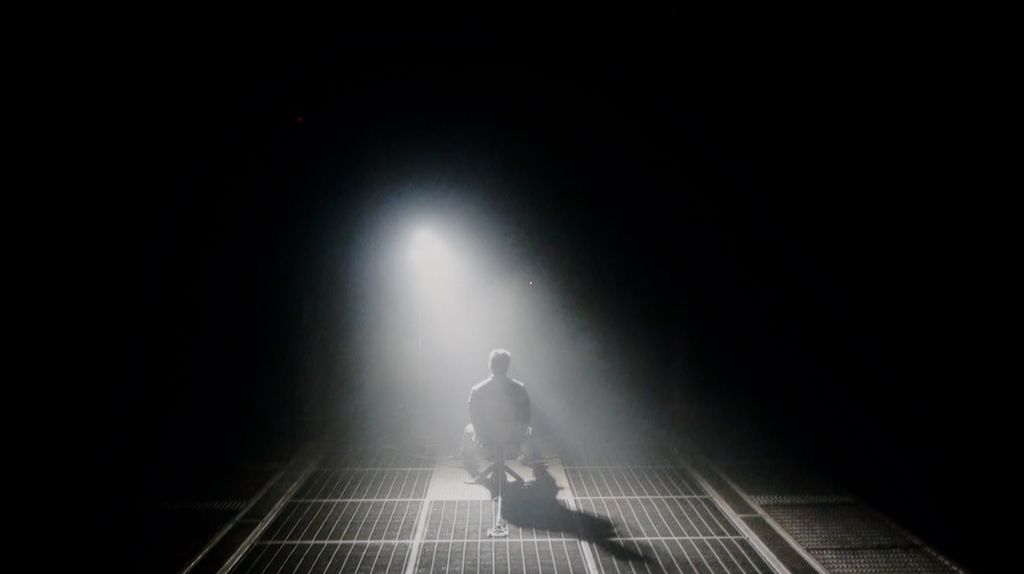
Let’s move on to what tigers like the most, which is black and contrast. If you were worried that the lower price of the C6KS model (C69KS/Q6CS) results from drastic cuts in image quality, I have great news for you regarding black and contrast. In a direct comparison with the more expensive C6K, the tested model barely falls short at all. Just like in the higher series, we have a VA panel supported by a local dimming system. Interestingly – and here’s a big surprise – during the tests we counted exactly the same number of dimming zones (in the same size) in the C6KS as in the more expensive counterpart we tested! Black levels perform very well. The contrast measurement results speak for themselves – for such a relatively inexpensive television, the black is deep and free from major flaws that often plague budget constructions without local dimming. Of course, we can’t cheat physics. It’s important to consider that in very demanding scenes (e.g. bright text on a black background), we may occasionally notice undesirable effects, such as blooming (the halo effect around bright objects). However, this is not something that disqualifies this television – generally, the black levels are at a very decent, satisfying level.
Halo effect and black detail visibility:
TCL C6KS - HDR effect quality
4.9/10
Supported formats: HDR10, HDR10+, Dolby Vision, HLG Color gamut coverage: DCI P3: 92.0%, Bt.2020: 71.0%
Luminance measurements in HDR:

Result
602 nit

Result
204 nit

Result
421 nit

Result
152 nit

Result
590 nit
And what about HDR? Here, the C6KS performs quite well and – as has become a recurring theme of this review – identically to the C6K model. The maximum brightness generated by this television is around 600 nits. In bright scenes, this translates to a really solid, cinematic effect, and generally, the video materials look good here. However, one must keep in mind the specifics of the dimming algorithm in this model. When very small, bright points (e.g., stars) appear against a dark background, the television can dim them quite significantly. The goal is simple: to eliminate blooming and maintain the best possible blacks. This is quite a reasonable compromise. Most viewers will definitely appreciate deep, "true black" more than additional micro-details, the display of which could cause the screen to appear greyed out. This is the nature of local dimming technology in this price range, and one must be aware of it. It is also worth noting that the TCL C69KS (C6KS) has an additional PFS coating, which is marketed under the slogan of QLED technology. Thanks to this, the colours are saturated and vibrant – our measurements showed that the coverage of a wide colour gamut reaches as much as 92% here.
Scene from the movie “Pan” (about 2800 nits)

Scene from the movie “Billy Lynn” (about 1100 nits)

The story repeats itself in the case of detailing reproduction. Looking at the dry numbers and measurement results, we did not expect fireworks from the cheaper C6KS. Meanwhile, the final effect turned out to be significantly better than one might assume – exactly the same as in the more expensive C6K. In film scenes from streaming – such as in demanding segments of the film "Billy Lynn" – and even in productions mastered to very high brightness (approximately 4000 nits), the image presented itself surprisingly well. Of course, peak brightness was naturally dimmed compared to the reference screen, but the entire scene was rendered with great precision. The television handles tone mapping very well. We did not notice undesirable merging of details in difficult, bright segments (e.g., the aforementioned fireworks). Everything is clear and sharp, which deserves praise in this price range.
HDR luminance chart:
HDR luminance
During testing, we noticed that with a static HDR10 signal, the TCL C6KS – like the C6K – does not always perform perfectly. This is most noticeable in scenes flooded with white, such as on our test screen with horses. In such moments, the panel's limited brightness makes itself known, leading to a loss of some detail in the whites and a slight flattening of the image. Fortunately, the manufacturer has ensured support for practically all the most important HDR formats, including the extremely popular Dolby Vision. And this changes everything! In this mode, thanks to the use of dynamic metadata, the image achieves a completely new quality.
Static HDR10

Dynamic: Dolby Vision

Factory color reproduction
5/10
Unlike the more expensive C6K model, the tested C6KS does not have an option in the menu labelled as Filmmaker Mode. Is this a reason to cry? Absolutely not. Our tests have shown that in practice, in terms of colour reproduction, the lack of this specific label makes virtually no difference. The best available Film/Cinema mode here offers an almost identical picture characteristic to the aforementioned Filmmaker in the more expensive model. So we get a very similar image, just under a different name. Therefore, if you were wondering whether paying extra for the C6K gives you better colours – the answer is no, in both cases the base is the same and requires slight adjustments.
Color reproduction after calibration
7.5/10
Thanks to the white balance adjustment, the C69KS's tendency to distort colours has been effectively limited, resulting in a very good final effect. After calibration, we will no longer see excessive warming of scenes in SDR or overly cool tones in HDR. However, it is worth noting the brightness characteristics. In SDR content, it is hard to have any objections – the image looks very good, especially in older films, television programmes, or materials from YouTube. It is significantly more challenging to evaluate the television's performance in HDR. Analysis of the EOTF curve suggests correct behaviour, but its practical variant reveals certain limitations. The C69KS can overly brighten the smallest elements of the frame, while at other times, it can dim the entire scene. Thus, calibration brought clear benefits in terms of colour quality, but certain limitations resulting from the local dimming operation and the way it is controlled by the C69KS cannot be overlooked, as we also saw in the C6K test.


TCL C6KS - Smoothness of tonal transitions
4.8/10
Looking solely at the fluidity of tonal transitions, the C69KS offers no real cause for complaint. The colour gradation is executed correctly, and more challenging sequences do not reveal significant problems. So you may be surprised by the low rating in this category. This is due to very strong dithering and artificially boosted "resolution," leading to a grainy and unnatural character of the image. For this reason, the final rating is significantly lower, despite the correct gradation of the tonal transitions themselves.








Image scaling and smoothness of tonal transitions
5/10
Smooth transition function

Image without overscan on the SD signal

The C69KS handles upscaling quite well. The tested 576p material looks surprisingly decent – a considerable amount of detail is retained, and the algorithm adds a slight "rounding" effect to sharp edges, making the image appear more cohesive. The performance in smoothing tonal transitions is less impressive. The television practically cannot improve them, leaving the image in a rather raw state. With older material, this can be quite tiring, as the lack of additional processing highlights any imperfections.
TCL C6KS - Blur and motion smoothness
4.9/10
Maximum refresh rate of the panel: 60Hz
Film motion smoothing option: Yes
Blur reduction option: No
BFI function 60Hz: No
BFI function 120Hz: No
C69KS offers a simplified motion enhancement panel in films, allowing the adjustment of effect intensity with a slider. This makes it easy to match fluidity to personal preferences. The ability to use higher refresh rates is also a plus – although the panel operates natively at 4K at 60 Hz, lowering the resolution to 1440p enables 120 and 144 Hz modes, both on consoles and PC. This sounds like great news, however, in practice, the image at these settings exhibits significant motion blur. The effect is so pronounced that the overall presentation appears merely average and loses its appeal for everyday use.
Blur (native resolution, maximum refresh rate):



Blur (4K@144Hz):


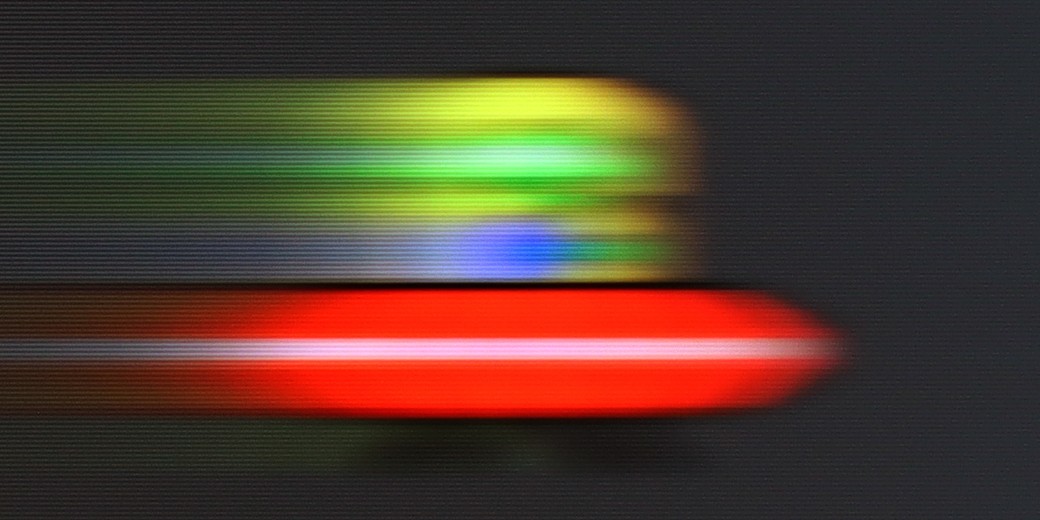
TCL C6KS - Console compatibility and gaming features
8/10
ALLM: Yes
VRR: Yes
VRR range: 48 - 144Hz
Dolby Vision Game Mode: Yes
Correct implementation of HGIG: Yes
1080p@120Hz: Yes
1440p@120Hz: Yes
4K@120Hz: No
Game bar: Yes

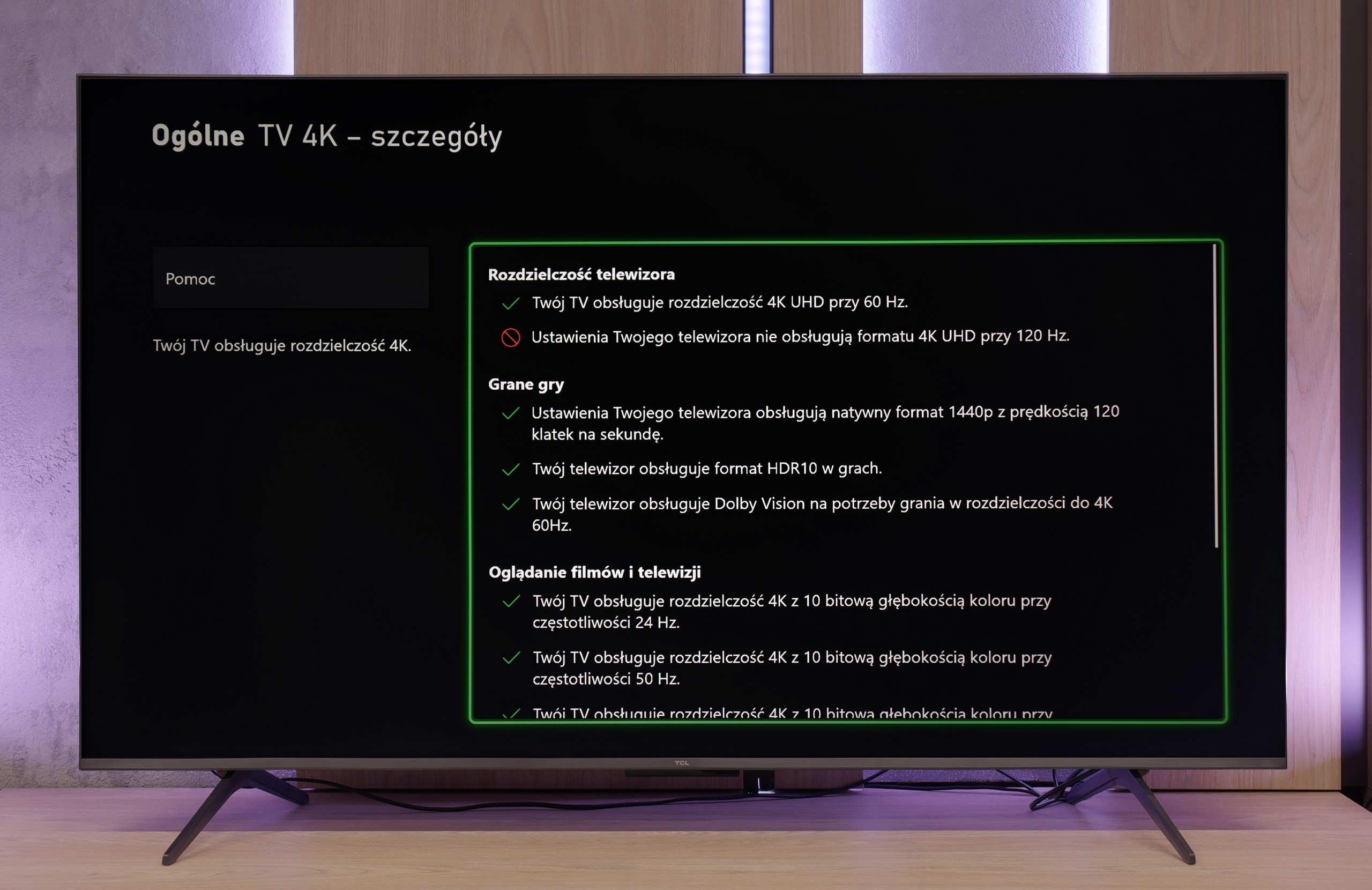
If we overlook the smudging and lack of native 4K at 120 Hz, the C69KS impresses with how well it performs during gaming. We get everything one can expect from a gaming television: variable refresh rate (VRR), automatic switching to game mode (ALLM), Dolby Vision Gaming mode, and a well-functioning HGiG. The television can also operate at 120 and even 144 Hz at lower resolutions, allowing for smoother gameplay on a console or PC. Additionally, there is a clear Game Bar that lets you quickly glance at key settings while gaming. As a result — despite a few limitations — the C69KS can be a really successful screen for gamers.



TCL C6KS - Input lag
10/10
TCL C6KS performs very well here — the latency drops below 10 ms, making reactions in games instantaneous. This is an excellent result in this class and definitely good news for those playing dynamic titles.
| SDR | HDR | Dolby Vision |
|---|---|---|
| 1080p60: 9 ms | 2160p60: 9 ms | 2160p60 DV: 9 ms |
| 2160p60: 9 ms |

TCL C6KS - Compatibility with PC
1.7/10
Chroma 444 (maximum resolution and refresh rate): No
Font clarity: Poor
Readability of dark text and shapes: Poor
Input lag in PC mode (4K, maximum refresh rate): 9ms
Matrix subpixel arrangement: BGR
Max refresh rate: 60Hz
G-Sync: Yes
Aside from the aforementioned possibility of working at 144 Hz at lower resolutions, the C6KS offers nothing that would encourage its use as a monitor. The fonts look really poor — the darkest ones have a distinct, rainbow glow, and standard text is surrounded by strange artifacts. The effect is noticeable enough that working on the computer for an extended period can be simply exhausting.
TCL C6KS - Viewing angles
2.7/10
Brightness drop at an angle of 45 degrees: 80%
The viewing angles in C6KS are very poor, typical of VA matrices. It is a compromise that we pay for by choosing high contrast — the image looks good straight on, but any significant deviation causes rapid drops in brightness and saturation.
TCL C6KS - Daytime performance
6.6/10
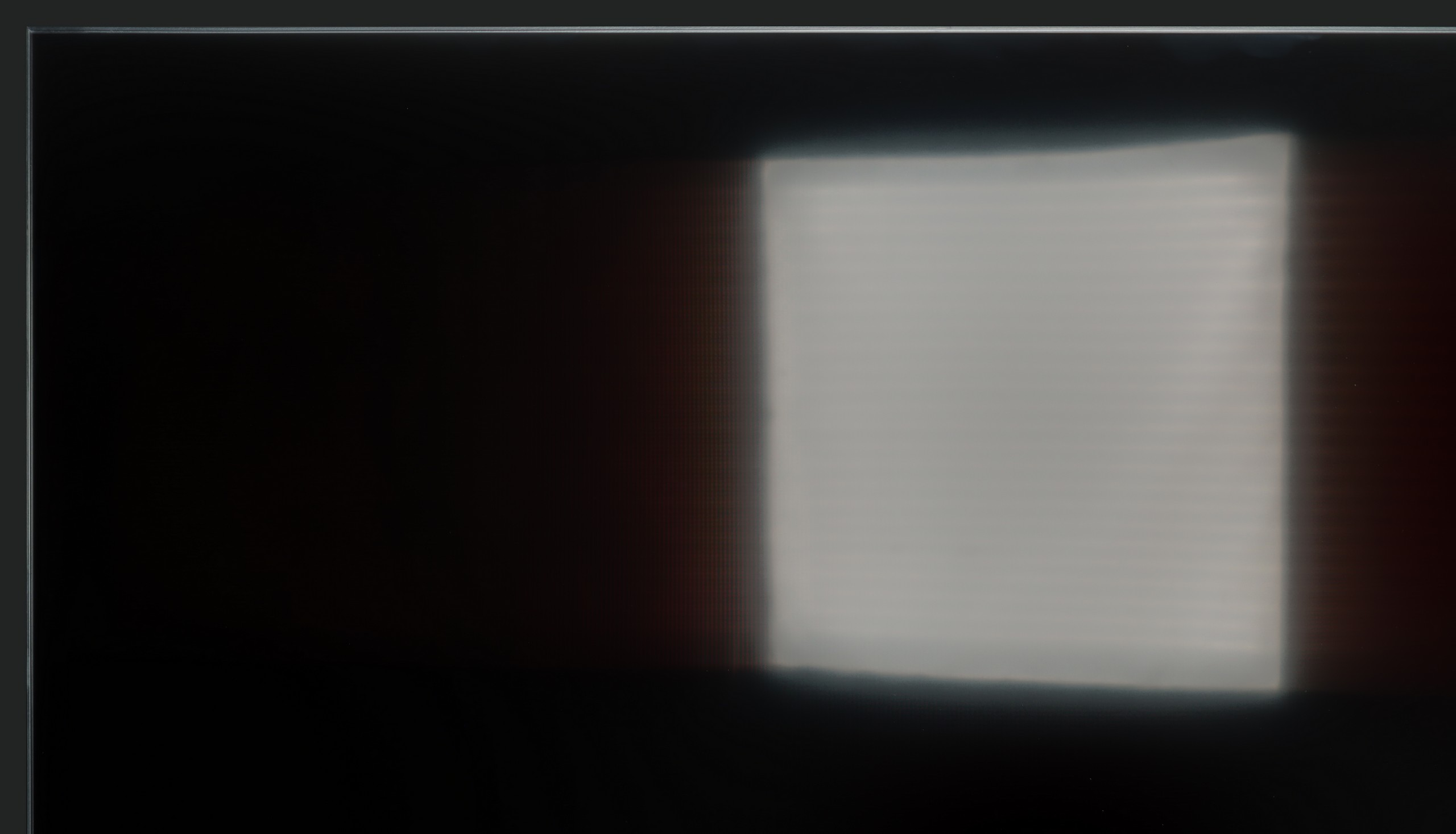

Panel finish: Satin
Reflection suppression: Good
Black levels during daytime: Very Good
The C6KS performs really well as a television viewing screen during the day. Its brightness of around 500–600 nits allows it to easily cut through more challenging lighting conditions. Additionally, the satin finish effectively suppresses reflections. As a result, the television proves to be surprisingly solid during daytime viewing, even in brighter rooms.
Panel brightness
Average luminance SDR
TCL C6KS / C69KS / Q6CS: 527 cd/m2
TCL C6KS - TV features
7/10
System: Google TV
System performance: Decent
- HDMI inputs: 3 x HDMI 2.0, 0 x HDMI 2.1
- Outputs: Toslink (Optical audio), eARC (HDMI), ARC (HDMI)
- Network Interfaces: Wi-Fi 2.4GHz, Wi-Fi 5GHz, Ethernet (LAN) 100Mbps
- TV reception: DVB-T, DVB-T2, DVB-S, DVB-S2, DVB-C
Classic features:
Recording to USB (terrestrial TV): No
Recording programming: No
Picture in Picture (PiP): No
RF remote control (no need to aim at the screen): RF
Backlit remote control: No
Teletext: Yes
Audio only mode: Yes
Bluetooth headphones support: Yes
Simultaneous Bluetooth headphones & TV audio: Yes
Smart features:
AirPlay: Yes
Screen mirroring (Windows Miracast): Yes
Voice search: Yes
Voice search in native language: Yes
Ability to connect a keyboard and mouse: Yes




The biggest advantage of the C6KS is the Google TV system. It's an environment that offers a lot — ideal for those who prioritise a wide selection of applications and convenient use of streaming services. AirPlay, screen sharing, and the voice assistant work very well here, making everyday use of the television simply comfortable.
The support for traditional television looks somewhat weaker. Users who are counting on advanced "television" features may feel overlooked. Aside from the efficiently functioning Bluetooth remote with a numeric keypad, we won't find conveniences like USB recording or PiP functionality here.
Sound connection options
HDMI audio:
Other audio outputs:
Toslink: Yes
Wireless audio:
Bluetooth: Yes
Supported audio formats (external HDMI eARC audio):
Dolby Digital Plus 7.1: Yes
Dolby True HD 7.1: No
Dolby Atmos in Dolby Digital Plus (JOC): Yes
Dolby Atmos in Dolby True HD: No
DTS:X in DTS-HD MA: Yes
DTS-HD Master Audio: Yes
Senior accessibility
Numeric keyboard on TV: Yes
Font size adjustment: No
Audio description: Yes
TCL C6KS - Apps
9.6/10























TCL C6KS - Playing files from USB
8.9/10
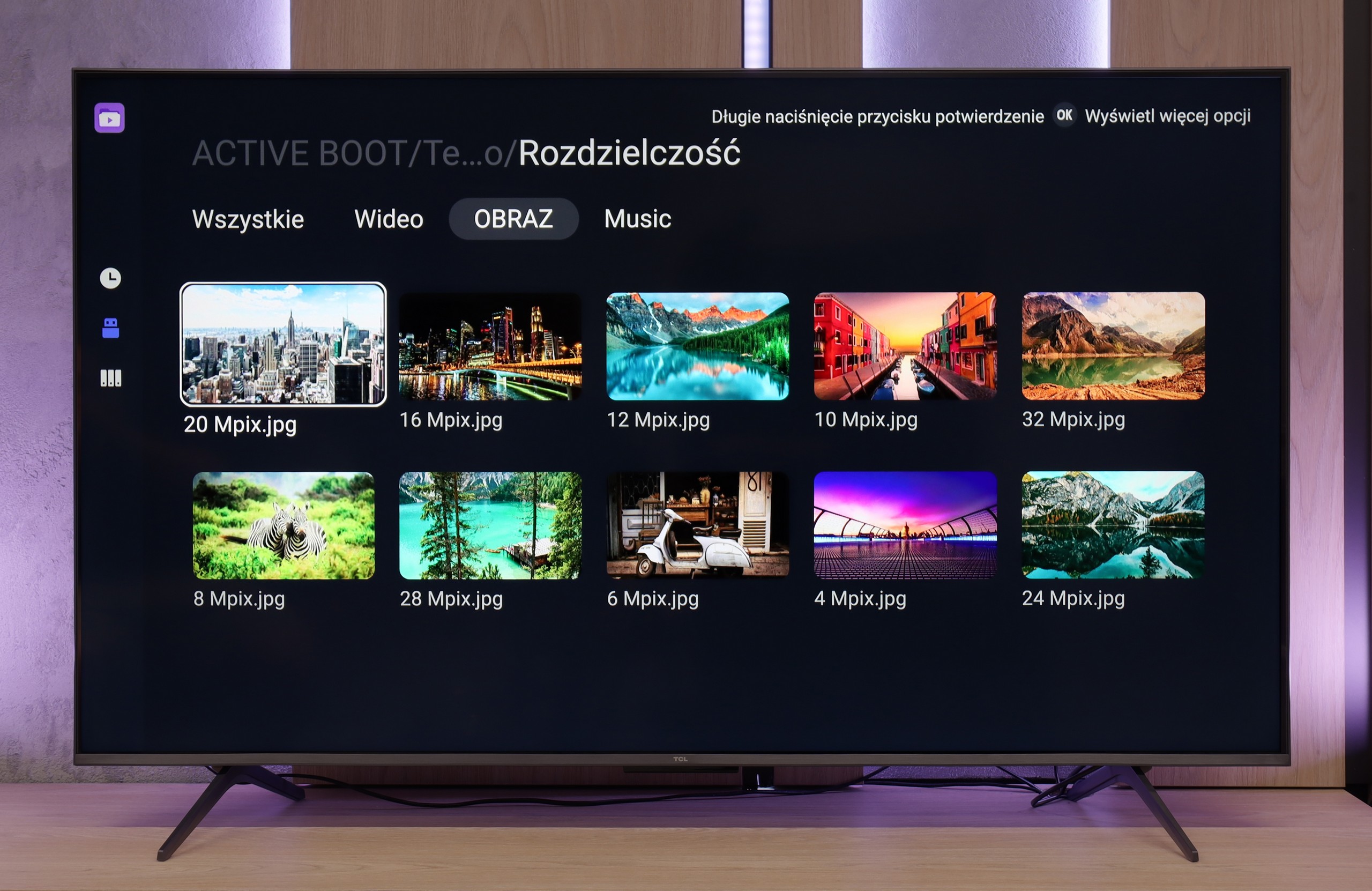
| Maximum photo resolution: | Supported photo formats: |
|---|---|
The system player really performs well and smoothly handles popular formats. The only hitch occurs with files from the Apple ecosystem (e.g. HEIC) – here TCL simply gives up. Fortunately, a huge plus of Google TV is that you can install your own application, e.g. VLC. This way, you can quickly fill in the gaps of the factory player and run virtually any material, customising the TV to your liking.
TCL C6KS - Sound
6.5/10
-
Maximum volume
Supported codecs
(TV speakers)
Dolby Digital Plus 7.1
Dolby True HD 7.1
Dolby Atmos in Dolby Digital Plus (JOC)
Dolby Atmos in Dolby True HD
DTS:X in DTS-HD MA
DTS-HD Master Audio
The TCL C6KS performs practically identically to the C6K model, as it uses the same speaker set branded by Onkyo. For a television of this class, the sound is quite good — you can even sense a slightly defined bass, which is not often found in budget segments. However, it is worth keeping the proper perspective. This bass is quite decent compared to other televisions, but a home cinema system or even a basic soundbar will still offer a significantly fuller, more dynamic sound. Therefore, the C6KS will be suitable for regular television viewing, but if someone is looking for a stronger sound, additional audio equipment will be the natural choice.
Acoustic Measurements
No acoustic data
TCL C6KS - Panel details
Image processor: MT5896 2,5GB RAM
Panel uniformity and thermal imaging:
Backlight Type: PFS LED

Founder and originator of the "ChooseTV" portal

Journalist, reviewer, and columnist for the "ChooseTV" portal
See articles related to TCL C6KS / C69KS / Q6CS:
5/13/2025






